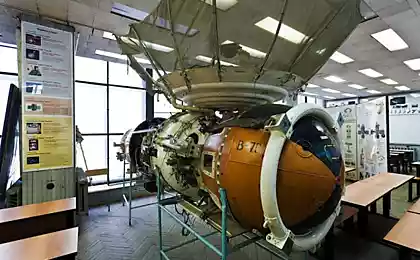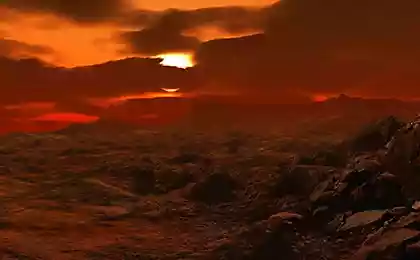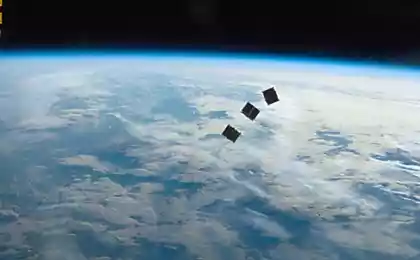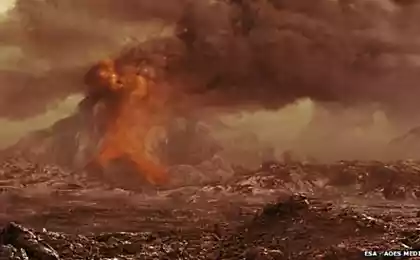4478
Interesting facts about Venus
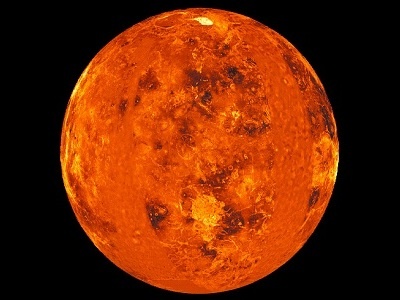
Venus is often called Earth's twin because it is the closest to it in size planet in the solar system. Scientists have determined that the diameter is 12 Venus 100 kilometers, which is about 640 km less than the Earth.
Although it is called the twin of Earth's surface condition of Venus completely different than that of the Earth. Scientists believe that the planet's surface is very hot and dry, and that liquid water is not here because of the extremely high temperatures.
Ancient astronomers called Venus and Phosphorous and Geperus in the mistaken belief that a celestial body, visible in the evening and in the morning - it's two separate space object. Planet Venus was later renamed in honor of the Roman goddess of love and beauty.
Venus orbits the sun in an almost circular orbit, and its average distance from the sun varies slightly. To make a revolution around the sun, Venus, 225 Earth days, or 140 days less than the Earth.
Turning around the sun faster Venus beats it every 584 Earth days, turning from the "evening star" (visible after sunset), in the "Morning Star" (visible before sunrise), and then - on the contrary.
Venus is the one of the two planets that rotate around its axis in a clockwise direction from east to west. Similarly, behaves just one planet, and it is Uranus.
Due to the fact that Venus rotates on its axis very slowly (full performed for 243 Earth days), the day on Venus is longer than a year.
As for Venus as seen from Earth, it looks brighter than any other planet or star in the sky. At certain times of the year, this is the first celestial body that can be seen in the west - and at other times of the last star visible in the morning.
Venus permanently coated dense cloud consisting of sulfuric acid, through which the beams can not penetrate the visible spectrum. For this reason, astronomers are able to see the surface of Venus through optical telescopes. Most knowledge about Venus produced using radar images obtained from the American and Soviet interplanetary space stations.
The high temperature on the surface of Venus is the result of the greenhouse effect. Because of the large cloud of sulfuric acid and others and the planet's dense atmosphere of carbon dioxide, almost all solar energy, makes its way through the atmosphere, is held under it and heats the surface of the planet.
The force of attraction on Venus is slightly smaller than the Earth's surface. If a person weighing 70 kg on Earth, visited on Venus, where he weighed about 62 pounds.
Due to the fact that Venus is slightly smaller than Earth and its density is also lower, its weight is 80% of the mass of the Earth.
Venus captured from space for the first time in December 1962, when an unmanned spacecraft Mariner 2 flew at a distance of 21,600 miles from the planet, 35 months after it was launched from Earth. It was the first planet (excluding land), which saw from space.
Spacecraft Venera 7, which successfully landed on Venus December 15, 1970, was created in the Soviet Union. Until that date, several vehicles flew past the planet's surface, and Venus 7 crashed into the planet in 1966.
Until very recently, Venus has had more than any other planet: next to it or on its surface was visited 18 Soviet and American spacecraft 6. Nowadays, the most visited planet Mars becomes.
Scientists doubt that Venus could exist any life - too high temperature on the surface of the planet.
Venus is the second planet from the sun and Nearest planet to the Earth. The distance between Venus and the Earth varies from 23.7 million miles, when they are closest, and the maximum distance of 162 million miles.
Geologists believe that once Venus had large supplies of water, about the same as on Earth. But the water has dried up about 300 million years ago, after the increased intensity of solar radiation.
Since Venus is very slowly rotates around its axis, there is no change of seasons - it just constantly "baked through" on all sides.
Scientists believe that Venus was formed mainly after volcanic processes, due to the large number of volcanoes, lava spills, formation of craters and ridges on the surface of the planet.
Unlike other planets, Venus no craters smaller than 2 km in diameter. Smaller asteroids just before it reached the surface of the planet, crumbles to dust in its extremely dense atmosphere.
Since the atmosphere of Venus is never clarified by the huge mass of clouds, seen from the surface of the sun or the earth is not possible.
Venus constant strong wind blowing that makes the clouds to make a complete revolution around the planet in four Earth days.
While the Earth's equatorial diameter is about 4, more than 5 km diameter measured between the poles of Venus these two diameters are approximately equal, making the planet almost perfect sphere.
Venus no appreciable magnetic field (such what there is on earth), and this led scientists to the assumption that the liquid core of the planet is likely much smaller than the Earth.
Venus and Mercury is the only planet in our system who have no natural satellites.
Venus, the brightest of the planets. It shines so much that on a moonless night, she could cast a shadow on the Earth.
